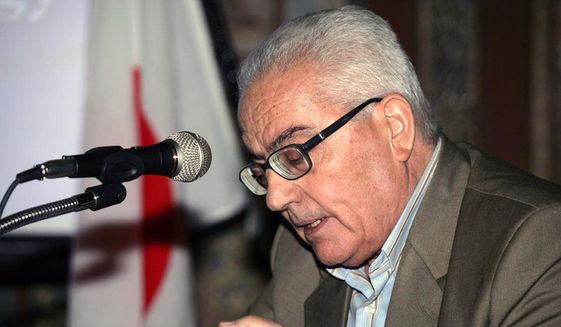The barbarians of the Middle East continue to discover new ways to commit atrocity in the charnel house they have made of their region. The Islamic State, currently the most virulent force for evil in the world, is systematically destroying many of the antiquities in Syria, keys to understanding ancient life in the cradle of civilization.
It’s the price of cobbling together a caliphate. In the midst of fearful turmoil, a hero emerges who demonstrates that sometimes principle is worth more than life itself. One such was Khaled Asaad, an archaeologist who stood between the marauders and the priceless treasures of the past. So he had to die. Depravity, thy name is ISIS, according to the Washington Times.
Mr. Asaad, 82, had spent five decades working in the ruins of the ancient city of Palmyra, designated as a UNESCO World Heritage site. In its campaign to eradicate traces of pagan civilization before the Prophet Muhammad, ISIS captured Palmyra in May, and celebrated by blowing up shrines.
The barbarians had earlier destroyed World Heritage sites at Nimrod, where the Tower of Babel, described in the 10th chapter of Genesis — “a tower with its top in heaven” — is thought to have stood. Ban Ki-moon called the destruction a “war crime.”
The terrorists compounded the destruction by seizing marketable artifacts, and worse, captured Mr. Asaad and tortured him in hopes that he would tell them where invaluable relics and artifacts had been hidden. He refused.
The interrogation lasted a month, and then he was charged with “idolatry” and beheaded in a public square outside the city’s museum. His body was suspended from a Roman column at a nearby archaeological dig to make the barbarians’ grisly point.
“They killed him because he would not betray his deep commitment to Palmyra,” Irina Bokova, the director-general of UNESCO, said. “Here is where he dedicated his life, revealing Palmyra’s precious history and interpreting it so that we could learn from this great city that was a crossroads of the ancient world.”
Terror affects people in different ways. For most, mortal fear compels compliance. For others, being made of stronger stuff, betraying principle and belief held over a long life is a fate worse than death. Mr. Asaad had spent his life uncovering, interpreting and preserving cultural relics, and he defied ignorant men who would ruin treasures carved by their forbears thousands of years earlier as a gift to posterity.
Such attempts to erase history are hardly only crimes of benighted lands across the sea. In the wake of murder in a black church in Charleston, S.C., by a young man obsessed with history he did not understand, monuments and artifacts of the Confederacy were marked in a fit of hysteria for destruction by men ignorant like those in Palmyra. “Those who cannot remember the past,” Santayana wrote, “are condemned to repeat it.”
When ISIS has been defeated, as it will be, and good men begin the arduous process of rebuilding its cities and restoring its pillaged antiquities, the Syrians of a later time might raise a statue to Khaled Asaad, who died so the future might understand the past.
M. Wassouf

